Grow What Where?
Location, location, location.
This often-repeated phrase is not only true for real estate agents but is also applicable for anyone starting on their edibles growing journey!
Knowing the conditions of where you are going to grow your edible plants is the first thing you need to consider. After all, this decision will help guide what you can or cannot grow in your space, and what things you could tweak to keep your edible plants alive.
Let There Be Light
Light is one of the basic requirements to grow plants. Whether they are sun loving or shade tolerant, they will need a certain amount of sunlight to stay alive and growing. Insufficient light for various species will cause them to etiolate (that is, their stems elongate to reach out for light), grow weakly or not grow, and even die out.
Most edible plants should ideally receive about four to six hours of direct sunlight to grow well. Look out for these things that would influence the amount of light your growing area will receive:
I. Indoors or Outdoors
If you are growing plants by the windowsill or along the corridor, that is considered indoors as it is under shelter and would only receive direct sunlight at certain times or the day, or indirect sunlight throughout the day. That being said, it also does not necessarily mean that you will receive lots of sunlight if you are growing plants outdoors, when your gardening area is a narrow strip between buildings or it is obstructed by structures (for example, a tall tree or a shelter).
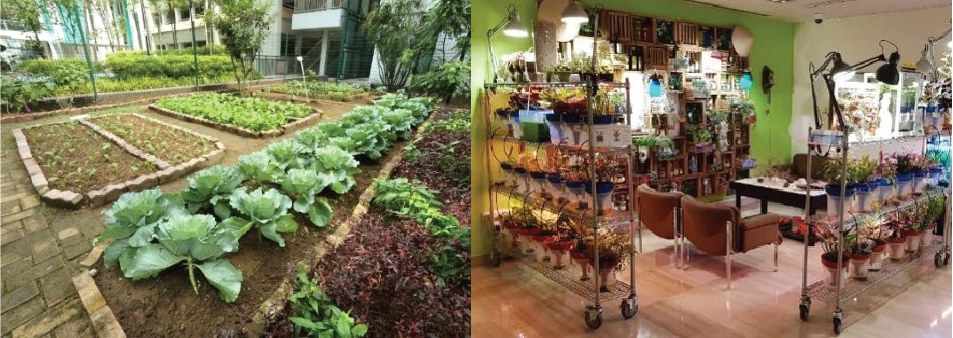
(From left) An outdoor growing area versus an indoor growing area
Fix-It: If your growing area has insufficient light, try supplementing it with horticultural light tubes. These are specially designed light tubes or bulbs that are available commercially in nurseries or sometimes even at hardware shops. They provide sufficient light wavelengths and intensities to grow most plants successfully indoors.
If your area has too much sun for the plants you want to grow, you can try building a simple shading structure using PVC pipes from hardware shops and wrap it with a horticultural shade net. These horticultural shade nets are available in nurseries and come in various levels of shading such as 50% or 75% shading levels.
II. Direction
Knowing where the sun rises and sets is also important to gauge how much sunlight your gardening area will be receiving a day. Generally, indoor areas such as windowsills and corridors that are north-south facing receive only indirect sunlight or in some circumstances, none at all throughout the day.
This increases as the facing direction shifts towards the east-west alignment, where your gardening area will get ample direct sunlight for about half of the day. This could also affect outdoor areas depending on the surrounding structures that may cast shadows on your plants at different times of the day.
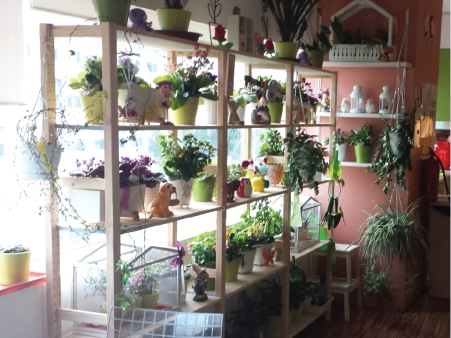
Windows and corridors facing the east-west direction receive good amounts of sunlight for at least half of the day if unobstructed.
Fix-It: While it is impossible to change the direction of the sun, you can identify any structures that are obstructing the sunlight (for example, a tall adjacent plant or furniture) and see if they can be moved elsewhere. Alternatively, shift your plants from behind these structures to the front to receive sunlight.
III. Surrounding Structures
Objects and structures such as trees and buildings may cast a shadow at different times of the day and for varying durations depending on their size, proximity to the planting area, or whether they overhang on the plant.
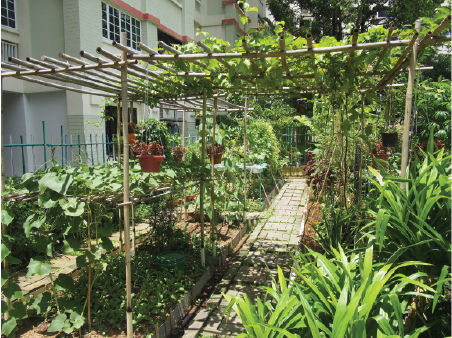
Surrounding structures such as a trellis may cast a shadow on plants that are below or next to it at different times of the day, thus affecting the amount of sunlight the plants can receive.
Fix-It: Similarly, you can identify structures that are obstructing the sunlight and see if they can be moved elsewhere, or shift your plants from behind these structures to the front to receive sunlight. Structures that provide shade can also work in your favour – try growing shade-tolerant or semi-shade plants such as various species of gingers and herbs instead!
‘Ground-Up’ Movement
The soil is where the plants extend their roots into to obtain water, nutrients, air, and also anchor themselves. Knowing and understanding your soil conditions is vital in determining whether the plant you are growing will thrive or grow weakly. Here are some things to look out for in soils:
I. Texture and Type
Knowing the physical attributes of the type of soil will inform you of its water retaining and nutrient holding capacity. The physical attributes are generally determined by three main components: clay, silt, and sand. Below are some general types of soils and their physical attributes.
Loamy soils are a good mixture of clay, sand, and silt. They are the ideal soil type for most plants as they contain high organic content, also known as humus. These fertile soils will support just about any type of plant.
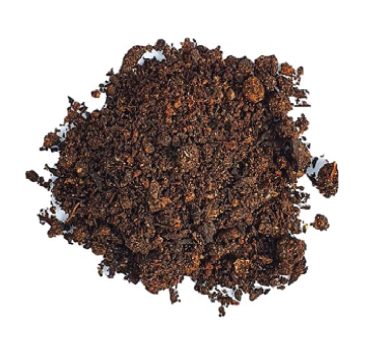
Clayey soils are dense and heavy soils which do not drain well nor provide space for plant roots to flourish. On hot days, they become hard and dry, and become sticky when wet. They have a greater capacity to hold nutrients. They often cause waterlogged soils.
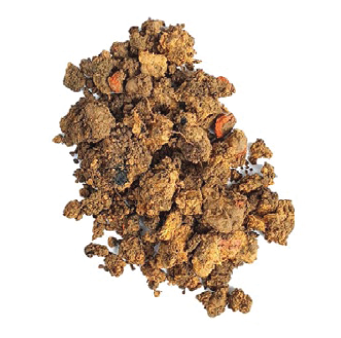
Sandy soils are low in nutrients and water-holding capacity. They have a gritty feel or rough texture and lose water very quickly.

Fix-It: You can adjust the texture and type of the soil by varying the composition of the three main components of clay, silt, and sand, based on the image below:
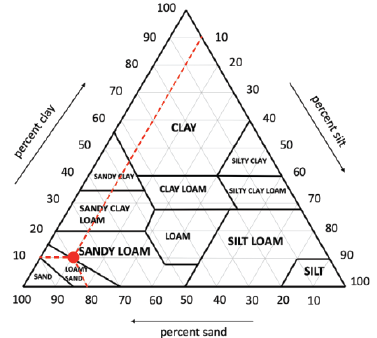
II. Nutrients
Nutrients are needed by plants to grow healthily and these are obtained through the roots from the soil. The main nutrients (or macronutrients) needed by plants are nitrogen (N), phosphorus (P), and potassium (K), or ‘NPK’ in short, and also some minor nutrients required in small quantities (or micronutrients) such as magnesium (Mg) and boron (Br).
The nutrients in soils are often naturally derived from organic matter which are material produced by living organisms and broken down through decomposition by microorganisms. One such example is humus. It is the dark brown organic material in soil made up of decomposed organic matter, such as dead leaves and other plant material. Lack of nutrients may cause a plant to have deformities or be stunted in growth.

Bonemeal (left) and pellet fertilisers (right) are readily available in local nurseries or supermarkets and can help alleviate nutrient poor conditions in soils.
Fix-It: You can add fertilisers to barren soil to replenish the nutrients in them. Generally, there are inorganic fertilisers (with fixed compositions of nutrient ratios of NPK and sometimes with micronutrients) which often come in the form of pellets, liquids, powder, or salts, and organic fertilisers (with non-fixed compositions of nutrients and ratios) which often come in the form of pellets (e.g. bonemeal), liquid (e.g. plant vinegar), or simply just discarded plant material such as banana peels which are high in potassium.
III. pH
Soil pH is defined as the relative acidity or alkalinity of the soil. Soil can be acidic (low pH) or alkaline (high pH) depending on which minerals are present. Soil fertility is directly influenced by pH.
The ideal pH range is 6 to 7 because this is the level where nutrients are stable and readily available for plant uptake. Most leafy and fruiting edibles grow well in this range. When the pH is too high or too low, it can slow the growth of plants by starving them of nutrients, mainly micronutrients.
Regular application of fertilisers does not mean that the nutrients will be available to your plants if there is an issue with the soil pH. Very high or low pH can also damage plant roots and is not conducive for beneficial microbial growth.

(From left) Soil pH meter and pack of soil pH test strips
Fix-It: Soils in Singapore are generally neutral or tend to swing towards the acidic side. You can test the pH of the soil using a soil pH meter or test strip (both of which you may purchase from local nurseries). If the pH is too low (or acidic), you can adjust the pH by adding slaked lime to raise the pH level.
Power of the Wind
Generally, a place with good circulation is ideal for growing plants as it reduces harmful fungal and bacterial growth which will affect the plants. This is especially important when growing plants indoors where it may be surrounded by walls with little or no air circulation. However, a place with too much wind would conversely be harmful for plants as the wind may strip the moisture from the leaves of the plants and also soils, which causes them to dry out faster and hence require more frequent watering.
Wind can also damage plants especially for large-leaved species – their leaves may be ripped off by force or become damaged if they catch the wind in the sail of their leaves. Strong winds may also sometimes dislodge fruits, topple pots or even uproot entire plants.
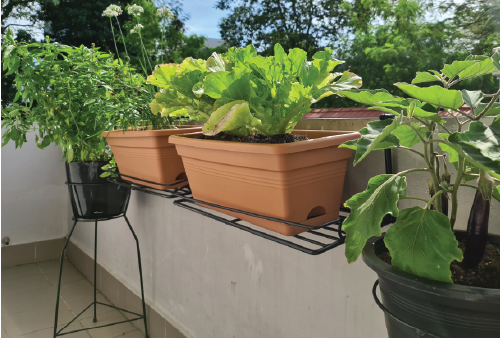
Plants along apartment corridors may receive strong winds due to wind-tunnelling effects which channel air flow along a certain direction, thus causing plants and soils to dry out faster.
Fix-It: For places with little or no air circulation, you can keep the windows open and place a small fan blowing away from your plant to encourage air movement. For areas with very strong winds such as corridors in the line of air tunnels or channels, you can try placing structures such as an acrylic board to deflect the wind without compromising on the sunlight received by the plant. You can also build a small structure using PVC pipes and shade nets (either the white or very light shading type) to block and reduce the impact of strong winds on plants.
Space Matters
The amount of space available determines how large and healthily your plant can grow. The types of space to consider are generally categorised into:
I. Above Ground
Plants need space to grow their leaves so that they receive sufficient sunlight and not shade each other out. Lack of above-ground space often results in smaller plants as some individuals are shaded out by others, or plants that are lopsided as they grow away from being shaded out.
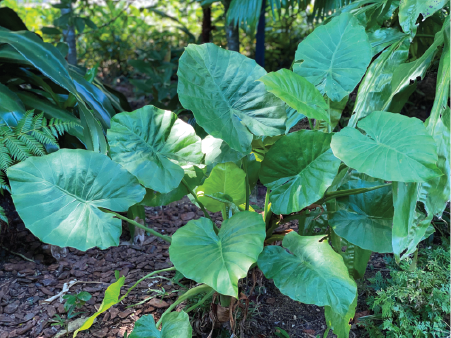
The Elephant Foot Yam (Amorphophallus paeoniifolius) needs a wide space to grow as its leaves can grow to over 2 m long!
II. Below Ground
The soil space is important for plants as plants generally follow a root-to-shoot ratio: how much roots a plant can grow will determine how many shoots (or above-ground plant parts) it can support. A plant that is root bound (restricted root growth due to insufficient soil space or volume) often results in stunted growth or has a gradual decline in plant vigour and health.
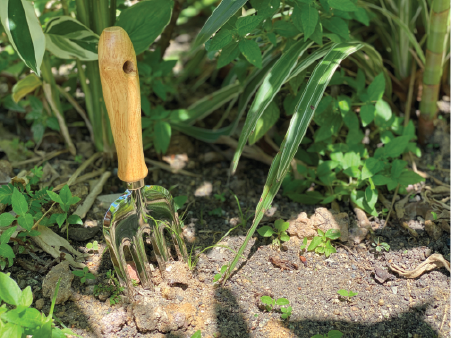
Below-ground space is just as important as above-ground space as roots are the supporting structures of the plant.
Fix-It: Space your plants apart when growing them. Seedlings should be separated if they are grown from seeds and planted well-spaced apart or in individual pots so they have sufficient above-ground and below-ground space to grow.
If you are growing plants in pots and planters, always check the bottom drainage holes to see if there are roots growing out of them, which indicates that the plant has filled the entire pot with roots. This means the plant should be transplanted into a bigger pot or in the ground.
If you are growing them in the ground and the soil depth is insufficient or the above-ground space is not enough, why not consider joining in our Community in Bloom programme, or signing up for an allotment garden plot under the NParks allotment garden scheme?
Relevant resources are also available online, to guide gardeners along the way. You can also download a copy of Horticultural Best Practices for Edible Gardening for free.
Happy gardening!
Gardening with Edibles
NParks will be distributing a total of 400,000 seed packets of edible plant varieties to interested members of public this year, as part of the Gardening with Edibles programme under the Edibles Horticulture Masterplan. Through the programme, NParks aims to encourage the public to garden at home or in community and allotment gardens, as well as give them the opportunity to play a key role in the ownership and stewardship for nature as we grow our City in Nature, which will bring forth benefits of health and well-being.
The seed packet will contain one type of leafy vegetable from among 10 varieties and a plant care sheet in four languages. Members of the public who are interested to receive the seed packets are invited to register at www.go.gov.sg/seed-pack-registration or call 6499 1099 to receive their seed packets through mail.
This brings the total number of seed packets distributed under the Gardening with Edibles programme since its launch in June 2020 to some 860,000, complemented with a slew of free online resources and workshops catering to different skill levels. The programme is also aligned with Singapore’s national strategy to strengthen our food resilience and reach the “30 by 30” goal led by the Singapore Food Agency. The Gardening with Edibles programme was established with the support of founding partners DBS Bank and Tote Board, as well as the Garden City Fund, a registered charity established by NParks. This round of seed packet distribution is made possible by the programme’s partner Singapore Post Limited, through the Garden City Fund.
Gardeners’ Day Out
Participate from the comfort of your home with online activities such as talks and demonstrations, video tutorials of activities and promotions offered. Enjoy Gardeners’ Day Out online at www.nparks.gov.sg/GDO.
You can also enjoy videos of our Gardening With Edibles Masterclass Series. They are conducted by NParks horticulturists, focusing on unique and challenging edibles across different plant families.
Learning More
If you are a gardening newbie, visit NParksSG, our refreshed YouTube Channel that serves as a one-stop repository for close to 300 video resources. It covers topics ranging from types of soil needed for your garden and how to plant, harvest and even cook your edibles.
For more information about the flora and fauna found in Singapore, please visit Flora and Fauna Web.
If you like what you read, follow us on Facebook, Instagram and Telegram to get the latest updates.
Text by by Chai Weili and Ang Wee Foong





Have views or comments on this article? Let us know via this form. If you would like to give us feedback on any other areas relating to our parks and gardens, please submit via https://www.nparks.gov.sg/feedback